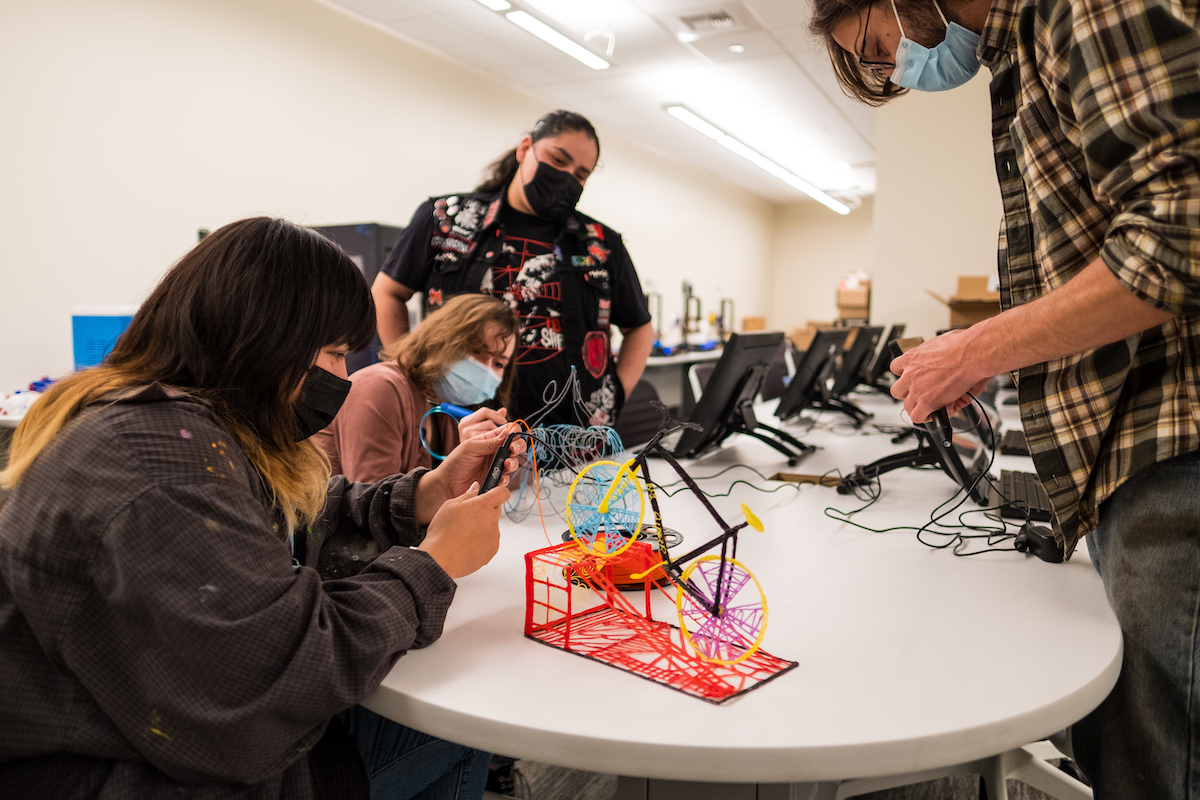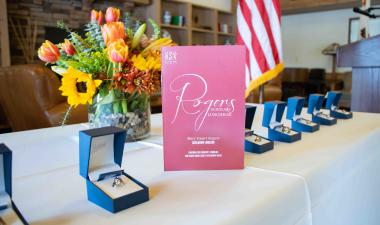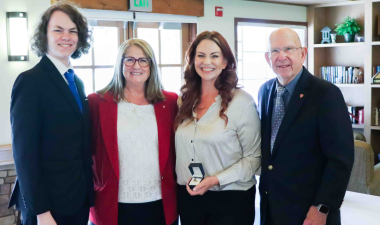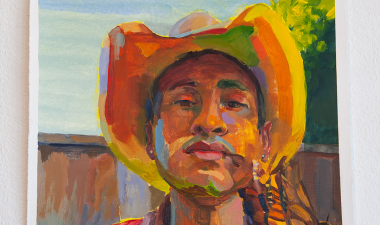If the term “fab lab” sounds like a fabulous space where Warriors can innovate, problem-solve and freely use digital resources to turn ideas into something tangible, all while getting a better grasp on the concepts they are learning in classrooms, your thinking is on the right track.
The term is short for digital fabrication laboratory, and there is one being established on the second floor of the Vasché Library with an opening date planned for fall 2022.

Designed as Stanislaus State’s central hub for innovation and cross-disciplinary experiential learning, the fab lab will be a small-scale workshop equipped with 3D printers and scanners, laser cutters, a vinyl cutter, a computer numerical controlled (CNC) embroidery machine and other high-tech equipment connected to the latest software. It will be open to anyone on the Stanislaus State campus seven days a week, including evenings.
Known as the “Warrior Fab Lab: A Makerspace,” it will be formally named by Stan State President Ellen Junn and her husband, Dr. Allan Greenberg, reflecting a $50,000 gift the couple recently made to support its development and future impact on education and the community.
The goal of the lab is to use the power of education and modern technology to promote innovation, entrepreneurship, social justice and community engagement while building skills to solve global challenges, according to Associate Professor of Art Jake Weigel, who is overseeing development of the project with a team of students, staff and faculty from across the University, including the Office of Information Technology (OIT) and the Office of Academic Technology (OAT), where the lab is situated in the University’s organizational structure.
The fab lab is expected to enrich students’ educational journeys by engaging them in a way that is different from but complementary to the traditional classroom experience.
“Not all students learn the same way, and some students learn better with experiential learning, also known as an active learning experience,” Weigel said. “With the fab lab, students can learn about a concept in the classroom, then experience it in the lab, and it will all click together for them.”
Three students who visited the Warrior Fab Lab briefly while helping Weigel with equipment said they are looking forward to its opening. Elena Arellano, Sarah Lamphere and Alyssa Higuera all agreed that the fab lab will enhance their educations and provide experiences that will prove useful in the workforce.
“It will definitely benefit me because my work is in mixed media and based around technology and AI (artificial intelligence),” said Higuera. “It will be awesome to learn how to use all this equipment, then create things through the programs that are offered. That type of experience will definitely help me after I graduate.”
In the fab lab, users will find one-on-one and group instruction on how to use the equipment effectively and safely, plus access to everything they need to design and make individual products, such as prototypes of devices designed to solve problems, models that explain complex math or engineering concepts, augmented reality (AR) models and simple utilitarian products like signs and buttons.
With easy access to advanced software and fabrication equipment, Weigel knows from experience that students and other users will find their imaginations set free as they pursue projects that previously seemed out of reach.
“Once I started using this equipment, it opened a whole realm of ideas I hadn’t imagined before, and there was no way I would have thought of those ideas without exposure to this software and equipment,” said Weigel. “That’s why it is so important to introduce students and faculty in all departments to the fab lab. If this equipment and software can have a big impact in the Art Department, imagine what it can do in other departments. There are great examples of this from other universities to build upon.”
One professor who is looking forward to the opening of the fab lab is Oluwarotimi Odeh, director of the Agriculture Program and Rolland Starn Endowed Chair.
Every spring Odeh, who has a doctorate in agricultural economics, teaches a senior capstone class on agribusiness entrepreneurship that guides students through the business development process in the agriculture industry. He expects the lab to enhance the class by giving students an opportunity to breathe life into their entrepreneurial notions.
“I occasionally have students with ideas for developing a new tool, equipment parts or accessories for farm use, and they need prototypes made,” Odeh said. “Making prototypes in the fab lab will be an excellent option for them. I’m hopeful that as more students learn about the fab lab, more of them will take advantage of what it has to offer.”
The fab lab’s ability to support and facilitate entrepreneurship also makes it a natural partner for the Warrior Entrepreneurship Initiative, a pilot program established with the College of Business Administration by a $250,000 gift from the Porges Family Foundation, according to Dean Tomás Gómez-Arias.
“The Warrior Entrepreneurship Initiative will include ideation events, entrepreneurship bootcamps and a business idea competition,” said Gómez-Arias, who has a doctorate in business science (marketing). “We plan to partner with the fab lab, since there is some obvious complementarity to promoting creativity and innovation.”
The fab lab will also partner on educational initiatives with the Stanislaus County Office of Education and the Turlock Unified School District, Weigel said. And once it is fully established, the team developing it will consider ways to allow access to the public.
With work underway to prepare for the fab lab’s opening, plans are also being made for a faculty learning community (FLC) to focus on it in the fall.
“The FLC will help faculty determine what all the options are by educating everyone on the fab lab, what is there and how it can be used,” Weigel said. “We’ll make sure it is presented in an incremental way so that everything is covered, and everyone has a complete understanding without being overwhelmed.”
Once the fab lab is established and running smoothly, Weigel said, other learning opportunities will be introduced to the campus through Canvas, in-person workshops and innovative social events where ideas can be discussed and action on those ideas can be developed.


